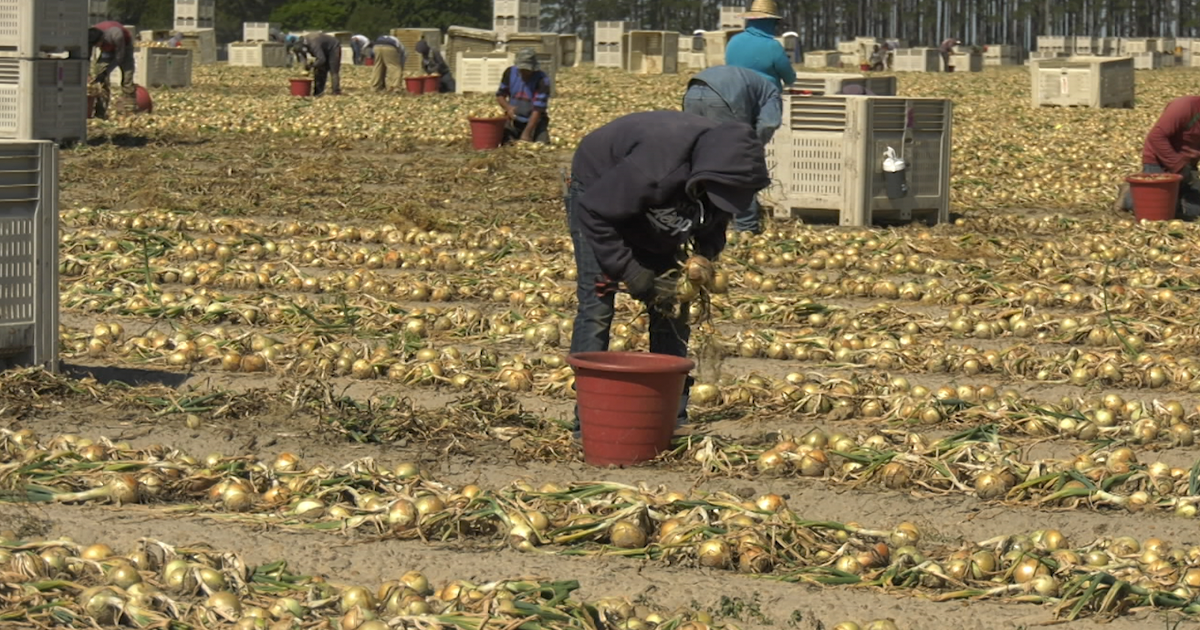LaGrange, GA
Here in the state of Georgia, our farmers and producers rely heavily on our country’s guest worker program known as H-2A. In fact, according to the US Department of Labor, in 2021 Georgia utilized more than thirty thousand guest workers, showcasing just how important the program and its workers are to our state’s fruit and vegetable production in growing and harvesting high quality produce.
“In fruit and vegetable production in Georgia, we’ve got over thirty commodities that we produce. All of which require a lot of intensive hand-labor,” says Chris Butts, Executive Vice President of the Georgia Fruit and Vegetable Growers Association. “When you see a Vidalia onion in the store, that onion has been touched and processed by hand multiple times. Same on other crops like cucumbers and zucchini, and even peaches and apples. These don’t lend themselves well to mechanization or automation, so we’ve got to have skilled labor out there in the fields that are helping to grow, pick, harvest, and pack the fresh produce to get it in the local grocery store shelves in the quality we’re looking for.”
However, the department of Labor, back late last year released a new wage rule for H-2A workers that increased their wages by fourteen percent here in Georgia – a mandate that Butts says producers couldn’t have possibly budgeted for and will severely impact fruit and vegetable operations across the state.
“We were hit with a fourteen percent wage increase in Georgia. That was the second highest percentage increase in the country, but that took that wage from 11.99 per hour to 13.67 per hour and it essentially becomes kind of the de facto minimum wage for ag work in that area,” says Butts. “No one can plan and budget for a fourteen percent increase year over year and that far exceeded anything we saw for cost-of-living adjustments for, let’s say social security recipients or consumer price index. It was almost twice that, so, saddling Georgia’s growers with that increase is going to cost them over 120 million dollars just this year alone given the number of H2A workers that we have in the state of Georgia.”
Butts says the wage increase comes at a time when producers across the country are already struggling and believes it will just cause even more of our state’s fruit and vegetable production to be sent outside of our nation’s borders.
“That fourteen percent as you mentioned comes on top of record high prices for inputs; everything that the farmer uses to produce and market that crop from the diesel in his tractor, to chemicals, to packaging. We’ve seen huge increases over the last couple of years and now we throw that fourteen percent pay rate increase on top of that. In our estimation, the only recourse a grower has is to use fewer laborers. They’re not going to be able to afford to bring as many workers as they have in the past,” says Butts.
According to Butts, the effects of that ultimately means less production in Georgia moving forward.
“Ironically, as we continue to battle imports and cheap produce coming across our borders from Mexico and others, I think this will ultimately drive more production south of the border to foreign countries. The AEWR is supposed to be there to protect the wages of domestic workers; we don’t have those domestic workers, so in an effort to protect a worker that doesn’t exist, we may end up sending more of the production of our food to foreign countries,” says Butts.
The new rule went into effect at the end of March, however there’s currently bi-partisan legislation being led by Senators Ossoff and Tillis that would reverse the wage increase through the end of 2023 – a measure Butts says is a step in the right direction.
By: John Holcomb

